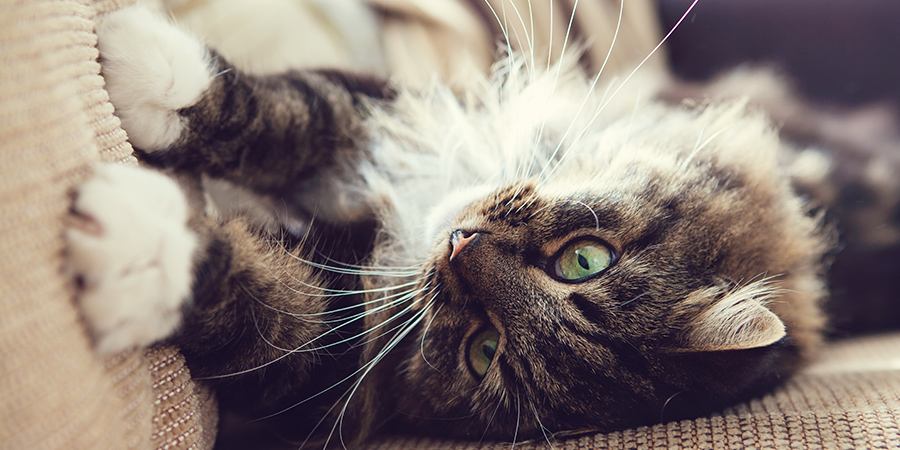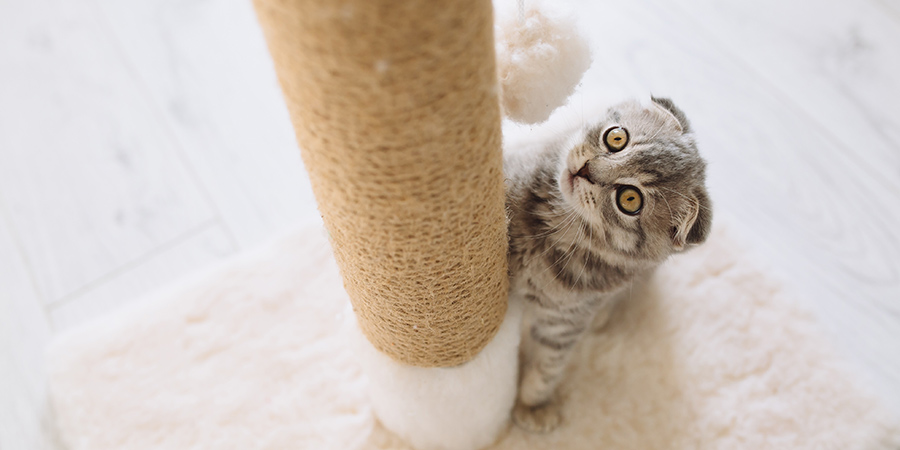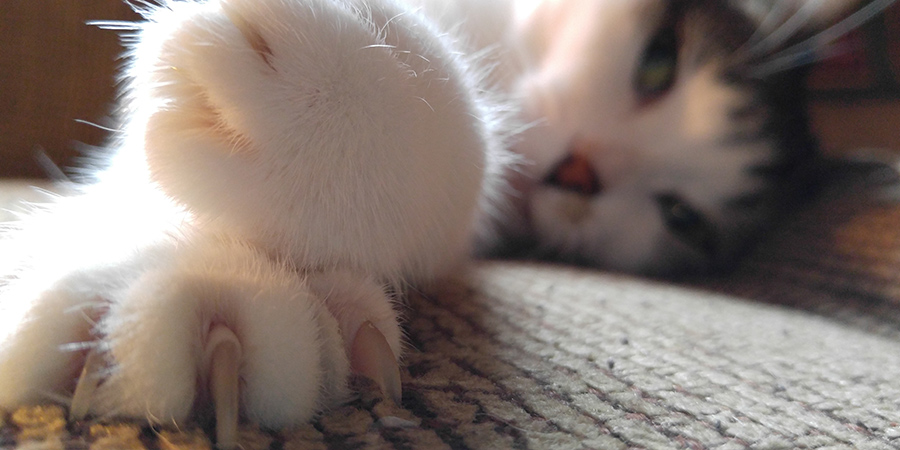Tails
Making pet parenting easy

The CLAW enforcement: How to train your cat from scratching the furniture
This entry was posted on 2018-04-09.
Where do cats lay down the law? At the CLAW enforcement.
Anyone who has a cat, and even those that don’t, know that cats like to scratch. If furniture could talk, your sofa would tell you their claws are worse than a weapon. Cat owners know this too, but love them all the same. However, instead of carefully placed cushions to help hide the marks, there is a way to prevent this from happening. First, let’s take a look at why a cat feels the need to scratch so much.
There are many reasons why cats like to scratch, from marking their territory, to removing the outer sheaths of their nails, or simply as a part of their stretching routine. When they scratch your furniture, they’re not doing it as an act of defiance (at least, they’re not all doing that). Instead, they’re simply following their instinct, and doing what a cat is meant to do. The answer, therefore, lies not in the prevention of scratching itself, but rather in training your cat to scratch on something else.
Fun fact: did you know that when a cat scratches it leaves an olfactory mark on the object it has pressed down on? This scent is released through their paw pads, and acts as a warning system to other cats.
Now, let’s run through a few tips and tricks to save your furniture while still keeping your cat feeling purrfect.
Be patient
Cats have strong personalities, and they like to test you. However, they are known to be just as loveable as they are naughty, and they will do anything to please their humans. Just the same, you should be willing to do anything to please them. Teaching them how not to claw your furniture is not going to happen overnight.
Look for alternative scratching surfaces
During operation S.O.S (save our sofas), you’ll have to provide your cat with better scratching alternatives. Find a sturdy scratching post that your cat can climb without falling, or one that can be used for both scratching and stretching. One scratching post is fine, but more is better. Place the posts where your cat is most likely to go, especially near the furniture they tend to scratch the most. If your cat is not using the new posts, show them how to use it with your own nails, or place their favourite toy nearby. Be warned though: never force a cat to do anything as this will have the adverse effect. See point 1 – be patient.
Trim their claws
Starting this from a young age is the most advisable, because the older they get the harder it will be to get them to sit still. Keeping them calm, and using a good nail kit is essential. Some tips to keep in mind: Pet your cat’s paws until it feels calm, and don’t feel discouraged if this takes a lot longer than you hoped. The best time to try would be after your cat has eaten. A full cat makes for a sleepy cat (I can relate). The more you do it, the easier it will become. Always keep your cat on your lap, facing away from you, with its paw in one hand and the clippers in the other. Only take off a little, just to get rid of the sharp edges. Reward your pet with a treat so that it learns to associate claw trimming with positive associations.
Cats scratch. Once you understand that this is simply part of their natural behaviour (and not something to punish them for), the easier it will be to find a solution.
Operation Save Our Sofas: Commence.
ABOUT THE AUTHOR

Christine Bernard
Christine Bernard is a freelance writer, a published author and the owner of Flat White Magazine. She lives in Cape Town with her husband and her two guinea pigs, Arthur and Bean. Other than her family, she loves four things in life: coffee, wine, books, and animals. She believes that a hug from an animal is worth more than a lifetime of therapy.





